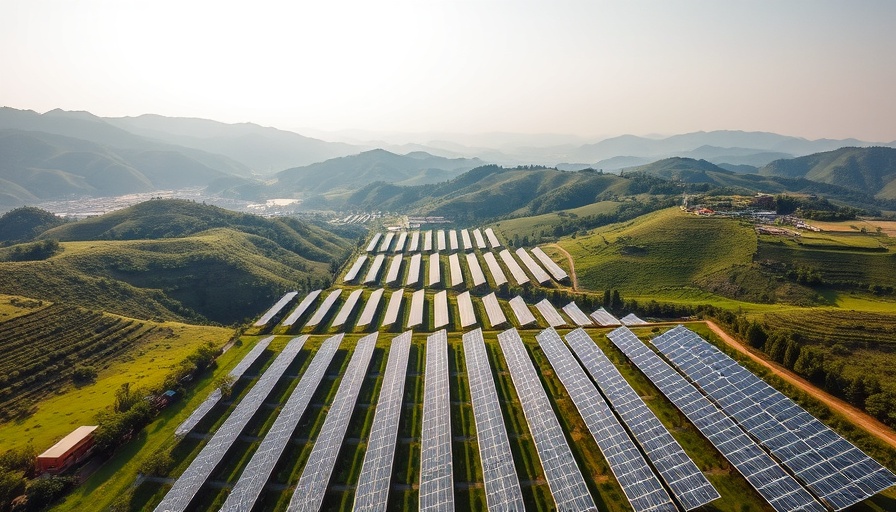
The Landmark Shift: China’s Solar and Wind Energy Breakthrough
In an exciting turn of events, China has made headline news by officially surpassing its coal-based thermal energy capacity with solar and wind energy for the very first time. This moment is not just numbers on a chart but signifies a crucial step in the global race for renewable energy. The National Energy Administration recently announced that between January and March 2025, China installed a whopping 74.33 million kilowatts of renewable energy. This surge brings the total installed capacity of solar and wind to an impressive 1.482 billion kilowatts, nudging ahead of thermal energy capacity which stands at 1.451 billion kilowatts.
The Impressive Growth of Renewables
Not only is this news a triumph for China, which has often struggled with its status as the world’s largest greenhouse gas emitter, but it also showcases the rapid growth of renewable energy worldwide. In the first quarter of this year alone, renewable sources accounted for 22.5% of the country's total power usage, a jump from the previous year. This statistic reflects a shifting paradigm where energy production is leaning more towards sustainability.
Why This Matters: The Global Perspective
With China leading the charge, the implications extend far beyond its borders. According to reports from the global energy think tank Ember, by 2030, China is expected to have at least 2,461 gigawatts of installed renewable energy capacity, nearly doubling its current figures. Notably, Ember also highlighted that China alone contributed to over half of the global increase in solar and wind generation in 2024. This could herald a tipping point where other countries may follow suit, inspired by China’s bold investments in cleaner energy.
China's Commitment to Climate Change
President Xi Jinping has recently reaffirmed the country's commitment to combat climate change. He announced that upcoming Nationally Determined Contributions for 2035 would comprehensively address greenhouse gases beyond just carbon dioxide. This dedication to sustainability amid changing international dynamics shows that China is not slowing down in its efforts to transition to a greener economy.
Challenges Ahead: Is More Needed?
Despite the breakthroughs, coal still dominates around 60% of China’s energy supply. Transitioning from coal to renewables is a monumental task that requires overcoming significant infrastructural challenges and dependency on fossil fuels. There’s a perception that without a substantial acceleration in clean energy adoption, these recent gains may not be sufficient for addressing global warming.
How This Affects You and Why It Matters
As professionals, eco-conscious individuals, and parents, we must realize that these monumental shifts have a direct impact on our future environments. With awareness of climate change heightening, individuals across the globe—especially those in the 25-45 age group—should pay attention to these developments. They signify not only policy changes but also evolving market opportunities in sustainability.
This news should energize wellness enthusiasts and those who value sustainability. Knowing that renewable sources are gaining ground allows us to actively choose eco-friendly technologies and lifestyles. Making informed decisions—be it in our home energy choices, investments, or community advocacy—can contribute to this larger narrative of renewable energy adoption.
Your Role in Driving Change
In conclusion, as stakeholders in this evolving story, let’s stay aware and proactive. Support initiatives in your local communities, become educated on renewable energy advancements, and prioritize sustainability in everyday choices. The shift to renewable energy is not just a political or global issue—it’s a community one and every small contribution counts!
To stay updated on future developments and progress in renewable energy, consider subscribing to news outlets that focus on sustainability efforts. Together we can all make a meaningful impact—one solar panel at a time!
 Add Row
Add Row  Add
Add 




 Add Row
Add Row  Add
Add 

Write A Comment